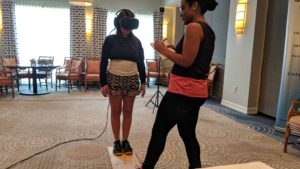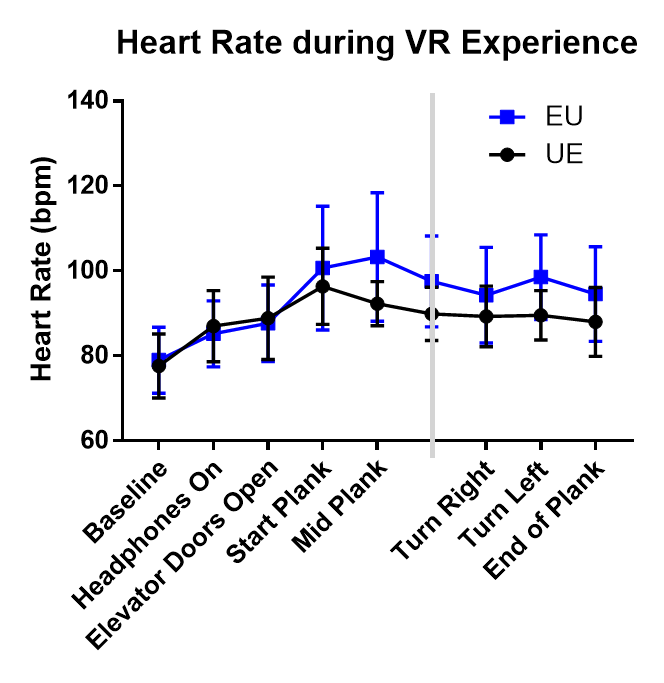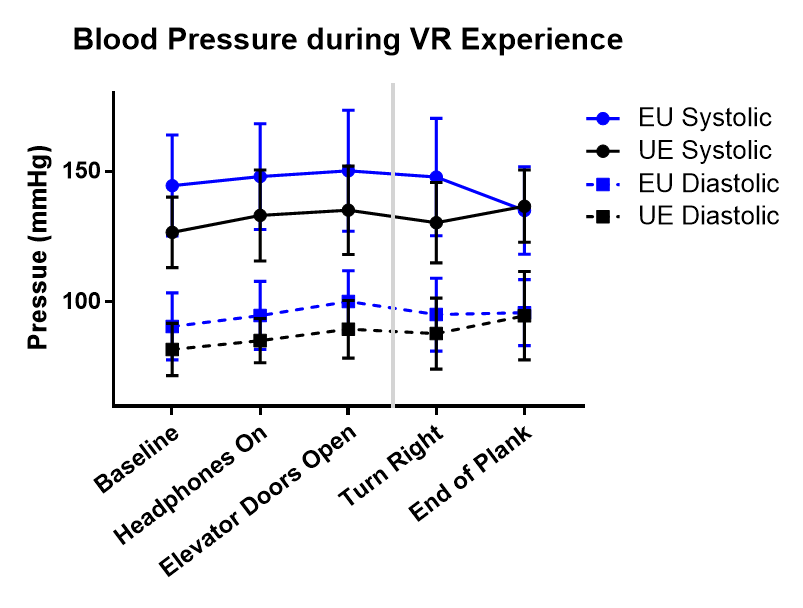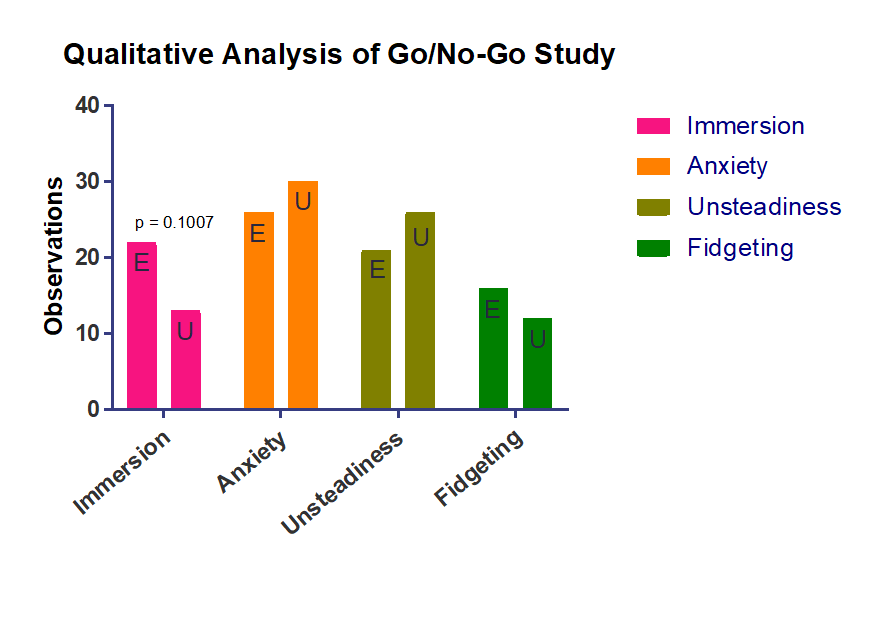Investigating Autonomic Response to Enhanced and UnEnhanced audio
Abstract
 The purpose of this study is to demonstrate the physiologic effects of enhanced audio and its ability to increase immersion of virtual reality (VR) technology.
The purpose of this study is to demonstrate the physiologic effects of enhanced audio and its ability to increase immersion of virtual reality (VR) technology.
This study uses an HTC Vive system and noise isolating headphones. Subjects experience “Richie’s Plank Experience” which takes the subject 40 stories up an elevator, to a plank hanging off the side of a building. A real plank was used to enhance the immersion of the experience. Subjects were then part of one of three cohorts and their physiological data, as well as physical behavior was observed.
The results showed that enhanced audio has a noticeable impact on the immersiveness in both physiological results and observable habits exhibited by the subjects.
Enhanced audio shows itself to be an important aspect of one’s ability to immerse themselves in a virtual reality experience.
Purpose

The purpose of this study is to show that enhanced audio increases the level of immersion of Virtual Reality Technology. The level of immersion will be assessed by measuring the physiological effects of a virtual reality event on the autonomic nervous system and other biological systems. The degree to which the level of immersion is increased by enhanced audio versus normal audio will be measured by comparing the magnitude and quality of the physiologic changes caused by VR with vs without enhanced audio and the results will be analysed.
This go / no-go study will determine if there is purpose for moving forward to a larger scale study.
Methodology
HTC Vive System calibrated to an 12ft X 10ft area and a 4ft 2”X12” physical plank calibrated to the VR plank in the “Richie’s Plank Experience” game. Assembly included Sony headphones with DPS output driver, Polar H10 heart rate monitor and Qardioarm blood pressure cuff connected to calibrated Android devices.
- Each participant completed a Pre-Test survey and assigned to a cohort.
- Participants were instructed during “Richie’s Plank Experience”.
- Blood pressure (BP) and heart rate (HR) are measured at several points during the VR experience.
- Participant were asked to complete a Completion survey and an Exit survey.
Results
N= 10
3 Cohorts:
- No Audio (1) – No Audio was reproduced into noise isolating headset to capture baseline reaction to visuals
- Enhanced to Unenhanced (5) – Began the experience with enhanced audio. At the middle of the plank or stage 5, the enhancement was turned off.
- Unenhanced to Enhanced (4) – Began the experience with unenhanced audio. At the middle of the plank or stage 5, the enhancement was turned on.
Heart Rate

Baseline heart rate for both cohorts were approximately equal.
Audio settings were switched after the participant reached the middle of the plank.
The average heart rate change from DPS enhanced to unenhanced was a decrease of 9 bpm, while the average heart rate changed from unenhanced to DPS enhanced only decreased 3.1 bpm.
Blood Pressure

Participants who experienced the DPS enhanced audio exhibited elevated systolic and diastolic BP compared to participants who experienced the unenhanced audio.
Similar to the HR changes observed, systolic and diastolic BPs decreased after enhanced audio was switched to unenhanced audio.
Interestingly, the systolic and diastolic pressures increased after audio was switched to DPS enhanced audio.
Qualitative Results

For each trial, we observed the participants body language and behavior for qualitative data. The raw data was recorded, reviewed, then organized into four “Themes” or categories based on our interpretation and description. The four main themes observed were anxiety, immersion, unsteadiness, and fidgeting.Each behavior was recorded as an observation, were tallied, and the sum of the observations were graphed.
For clarification, here are a few descriptions of behaviors observed that were categorized into themes.
- Fidgeting: Rubbing their hands together, clenching their fist, shrugging their shoulders, adjusting their clothes, finger tapping/fiddling their fingers, or outstretching of their fingers.
- Anxiety: nervous laughter, voicing fear of heights, screams “ahhh” or “oh my God”, takes deep breath
- Immersion: reaches out to touch something in the virtual world, explores the virtual world, looks around the virtual world, mentions an element (trees, building, helicopter) in the virtual world, express fear of breaking the plank
- Unsteadiness: swaying, knees shaking, arms out at sides for balance
A total of 89 observations were made during the time period when DPS was on (Enhanced) and a total 81 during the Unenhanced periods.

